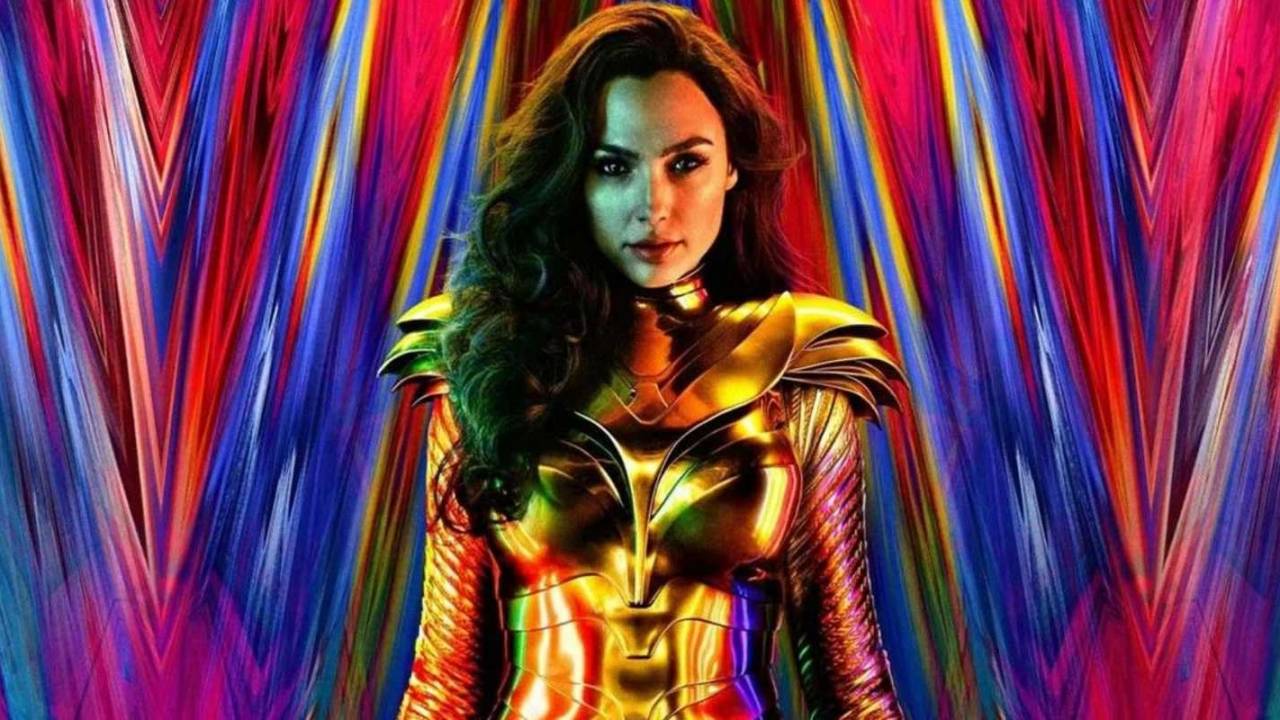Wonder Woman 1984 aims to call back to a simpler time for superheroes. A time before shared universes and dense, ceaselessly fact-checked lore. A time before fan ownership debates and endless social justice commentary. The era of Christopher Reeve’s Superman and Michael Keaton’s Batman. A time when life was simpler, thriving on a wondrous economy and an imminent end to the then-decades-long Cold War. Boy, that sounds exactly what audiences could use after the grueling year of strife and disease that 2020 has turned out to be for humanity, doesn’t it?
Where Wonder Woman 1984 stumbles however is in forgetting the wholesome simplicity of that early era for DC movies, and big screen superheroes in general. This oft-delayed sequel to 2017’s original Wonder Woman movie, an excellent offering that currently serves as the crown jewel of the DC Extended Universe’s movie catalogue, suffers frequently from a meandering storyline that feels both too overdone and too corny at the same time. Wonder Woman 1984 is too long, stuffed with too many competing narrative ideas, and it ultimately fails to recapture that astonishing sense of scale and drama that drove the original Wonder Woman to such big success with critics and audiences.
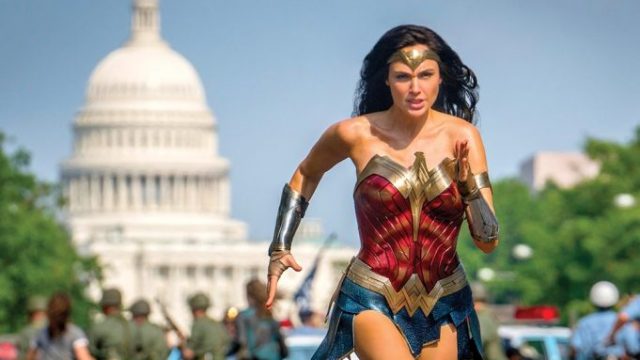
However, I think the real problem with Wonder Woman 1984 is not that it’s truly bad. The bigger issue with it is that its vision is at odds with itself, wanting to be both simple and complicated, and both modern and nostalgic. It’s an ambitious follow-up that isn’t built on bad ideas, but more accurately on good ideas that don’t cohesively gel, and just end up becoming a big pile of unevenly-cooked cinematic mush. Ironically, despite the fact that the movie wants to call back to the earliest years of DC movies in general, Wonder Woman 1984 instead inadvertently harkens back to the oldest days of the shared cinematic universe it’s set within, when early DCEU movies like Man of Steel and Suicide Squad also found themselves devolving into interesting, but tedious messes, as DC scrambled to try and replicate a winning movie formula that they could then utilize against their juggernaut competitor, Marvel.
Despite the fact that it’s a flawed sequel however, I found Wonder Woman 1984 to nonetheless be a heartwarming and uplifting blockbuster. It doesn’t ultimately measure up to its predecessor, and it seems to serve established Wonder Woman/DC fans more than general moviegoing audiences, but it still succeeds well enough as a colourful superhero romp, one that contributes another distinct chapter to the ever-unpredictable canon of the DCEU. You should definitely approach it with revised expectations though.
Wonder Woman 1984 once again dives into the past of Diana Prince/Wonder Woman, former princess of Themyscira, who hasn’t aged a day since the 1918-era events of the original Wonder Woman movie. Still mourning the sacrifice of her first love, Steve Trevor, Diana has become a respected, but reclusive curator of ancient artifacts, while occasionally operating as a vigilante hero for Washington, D.C. Diana’s life once again irrevocably changes however when she meets new friend, Barbara Minerva, played by Kristen Wiig, a plain, socially awkward archaeologist and historical expert, who discovers a ‘Dreamstone’ among the artifacts that the then-unnamed Wonder Woman rescues from a black market operation run out of a local shopping mall. Because 1980’s logic.
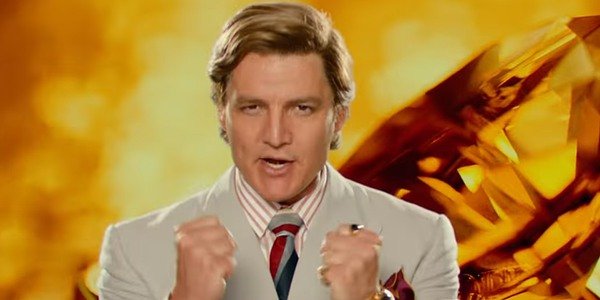
The surfacing of the Dreamstone also provokes the attention of TV personality and oil tycoon, Maxwell “Max” Lord, played by Pedro Pascal, who covets the Dreamstone’s wish-granting powers. This serves as the proper inciting incident for Wonder Woman 1984’s events, as a power-hungry Max Lord abuses the power of the Dreamstone, the influence of which also goes on to change the realities of Diana and Barbara in some pretty major ways. I obviously won’t get into spoiler territory on this note, even though it’s pretty obvious from the marketing that the Dreamstone is related to the much-teased return of Chris Pine’s Steve Trevor, despite the fact that he died during Diana’s confrontation with Ares at the climax of WWI.
The Dreamstone, the central macguffin in Wonder Woman 1984, which, believe it or not, does exist in DC Comics lore (though it originated in the Sandman comics, not the Wonder Woman comics), plays especially heavily into the character arcs of Max and Barbara, though Max’s storyline definitely turned out better than Barbara’s in the end. Max in particular deviates quite heavily from his DC Comics inspiration in Wonder Woman 1984, going from an amoral, telepathic business magnate in the printed panels to a more misguided, sympathetic con man that winds up in over his head throughout this movie. Despite that significant change however, Pascal’s affable loser-turned-sorcerer effectively echoes light-hearted super-criminals from DC’s yesteryear, in particular Gene Hackman’s Lex Luthor from the original quadrilogy of Superman movies; An almost innocently wicked mischief maker who originates as more of a lovable foil than a truly malicious threat, and whose schemes are so fantastical and absurd that they tickle the imagination, even when Max is supposed to be the bad guy.
Where this becomes a bit less effective is through Wonder Woman 1984’s secondary antagonist, Barbara, though that’s not the fault of Wiig. Wiig’s awkward girl schtick lends itself perfectly to a pre-powered Barbara, who gradually evolves into a giggling overnight sexpot, an opportunistic justice seeker, a desperate thug, and finally, a mindless animal, consumed by her own dependence on her newfound recognition and power. This naturally culminates in Barbara’s transformation into one of Wonder Woman’s most longstanding and iconic foes, Cheetah, with Barbara fully morphing into the feline fatale for Wonder Woman 1984’s climax, as this movie’s marketing has liberally indicated.
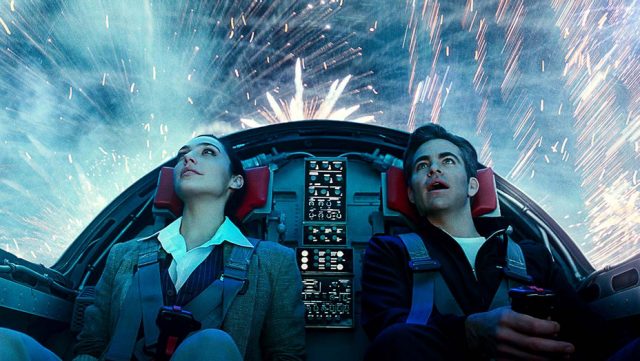
The problems with her character arise when Barbara/Cheetah eventually fails to mesh with the grander stages of Max’s schemes during Wonder Woman 1984’s latter half. The period setting also becomes an obstacle here to boot. Barbara’s transformation into Cheetah feels like it would have benefitted from being saved for a third movie. Problem is, Barbara would be an old woman that’s well into her 70’s by the time of the present-day DCEU movies. Wiig’s performance, and the fundamental idea of Barbara/Cheetah being motivated by her envy of Diana’s beauty and power, are both great, but they’re stuffed into a sequel that already has entirely too much going on. Worse still is that Barbara’s ultimate transformation into Cheetah is incredibly contrived and head-scratching, even by the standards of a movie that’s intentionally trying to call back to a more whimsical, less logical early era of DC filmmaking.
Where Wonder Woman 1984 excels more between its characters is in focusing around Diana reconciling her grief with Steve, suddenly alive and displaced in a then-future he was never meant to see. Max also provides a good contrast to Diana’s character conflict here, being a man who covets everything for himself and the world, while Diana rejects the world of man, and wants virtually nothing from it, other than to preserve what beauty she can find untouched by the raucous ambition of the 80’s. The ultimate resolution for Diana, Steve and Max is also very satisfying and fitting, though Barbara yet again gets the short end of the stick here, suffering a forced character turn with an equally inexplicable resolution. It’s a huge waste of one of the best, longest-standing Wonder Woman villains, one that’s unlikely to get a do-over in the upcoming third Wonder Woman movie, which will allegedly shift the setting to the present-day DCEU, and no doubt feature an entirely new villain to menace Diana.
It’s also true that the bloat and mish-mash of scattered ideas throughout Wonder Woman 1984 can sometimes trip up Diana herself. The seemingly random effects of the Dreamstone play all manner of havoc with Diana and her abilities, which range heavily in terms of quality. This feels fitting in a way, considering the progression of Max’s character arc, but sometimes, a mess is just a mess. Wonder Woman 1984 lifts at least one major hook from the storyline of Superman II on this note (I won’t spoil it, but DC fans will know it when they see it), a vintage DC movie that this sequel has been frequently compared to, but it’s executed much worse here. This retro-inspired obstacle for Diana ends up not really making a difference in this movie’s events, and could have been cut out entirely. It’s certainly not enough to sink the innate appeal of Gal Gadot as Wonder Woman, but some of the obstacles that Diana encounters both in and out of her mantle as the Goddess of Truth feel awkward and shoehorned in here, when there’s already a central conceit (the magic-fueled return of Steve) that can hold up Diana’s sequel arc just fine on its own.
Like some of the DCEU’s earliest efforts, the greatest Achilles’ heel behind Wonder Woman 1984 is its storytelling. This is frustrating, because had this sequel committed to a more simplified, streamlined direction, it would have been more true to the tone, and made the plot more digestible to audiences beyond the Wonder Woman/DC fandom.
Instead, what we get is a lengthy, vaguely sloppy plotline that feels like it’s all over the place in terms of its focus and what it wants to present. There is an over-arching conflict, and the individual character arcs within it all tie back to this over-arching conflict, but the finer details in between is where Wonder Woman 1984 tends to stumble. This movie’s pacing is incredibly unpredictable, ranging from agonizingly slow to ridiculously fast, and everywhere in between, depending on various scenes. It never manages to nail down the elegance and sense of narrative rhythm that was achieved so well throughout most of the first Wonder Woman movie, which was also a very lengthy, two-hour-plus superhero blockbuster, but didn’t feel nearly as long as it was, because its story was paced and mapped out so well.
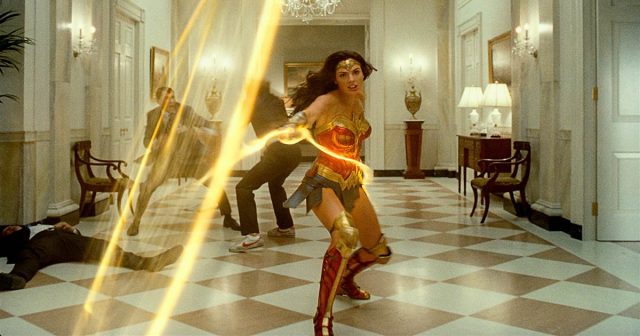
Without spoiling anything however, I have to say that Wonder Woman 1984’s storytelling is much more clumsy and absent-minded. It can be really great at its best, but too often loses itself in trying to cram as many story developments into its progression as possible. This can lead to Wonder Woman 1984 sometimes feeling like a slog for non-fans of Wonder Woman/DC especially, where you’ll be checking the time between the slower scenes, before better scenes thankfully do eventually come along. There aren’t even any real tie-ins to other arms of the DCEU to boot. Wonder Woman 1984 is just that wrapped up in itself. It can certainly make that work sometimes, especially when its warm sense of nostalgia does successfully combine with its polished, modern ideals, but sadly, much of the storytelling in Wonder Woman 1984 leaves something to be desired, starting with a more strict editor.
(NOTE: The ‘Spoiler’ section, when clicked, discusses whether Wonder Woman 1984 has any post-credits scenes, and whether they may or may not lead in to potential connections with future Wonder Woman movie sequels, or any other DCEU projects to come.)
That being said, there are some interesting character additions from the DC pantheon in Wonder Woman 1984 that weren’t marketed at all. Simon Stagg, another crooked businessman from DC Comics lore, shows up in a brief role as one of Max Lord’s angry investors, one that’s eventually further screwed over by Max’s wielding of the Dreamstone. Likewise, while the Dreamstone originated in DC’s Sandman comics, originally published under their since-shuttered Vertigo imprint, its origin has been reworked in this movie sequel, to instead be a lost weapon of an ancient god, colloquially known as the ‘Duke of Deception’. The Duke of Deception is a recognizable nemesis of Wonder Woman from DC Comics lore, and his connection to the Dreamstone could foreshadow him as a major antagonist in the upcoming third Wonder Woman movie, or perhaps this franchise’s in-development Amazons spin-off movie. Finally, the Dreamstone is also briefly used in seemingly disconnected events within Bialya, a fictional Middle-Eastern country in the DC Universe, possibly teasing that this setting may show up again within a future DCEU project someday.
There’s also a lone mid-credits scene in Wonder Woman 1984, one that carries some more interesting implications for the Wonder Woman movie franchise, and its upcoming third installment. This scene involves a mysterious woman, one that appears to possess Diana’s Amazonian strength, saving a baby from a falling pole. This woman happens to be Asteria, a celebrated Amazon warrior who ensured the Amazons’ original escape from enslavement to Themyscira, and the owner of the golden winged suit that Diana uses during this movie’s climactic battle against Cheetah, taken from DC Comics’ Elseworlds miniseries, Kingdom Come. Asteria is also played by Lynda Carter, TV’s Wonder Woman actress from the 1970’s, which appears to exist as merely a fun Easter egg. Some DC fans however have speculated that Asteria may actually be the same Wonder Woman from Earth-76, the home universe of the 1970’s Wonder Woman TV show, possibly foreshadowing the DCEU’s ambition to recognize the live-action DC Multiverse in 2022’s Flash movie.
Patty Jenkins returns to direct Wonder Woman 1984, this time having a lot more creative control over the production, or so it would appear. Not only is Jenkins directing this time out, but she’s even co-writing the script, and overseeing the storyline in general, with some input only coming from DC’s former CCO, Geoff Johns. This is likely why Wonder Woman 1984 is such a radical departure from its predecessor in many respects. It’s no longer a job for Jenkins to simply bring someone else’s script to life, but now Jenkins’ own baby, realizing the Wonder Woman movie she wants to make, unfiltered, for good or for ill.
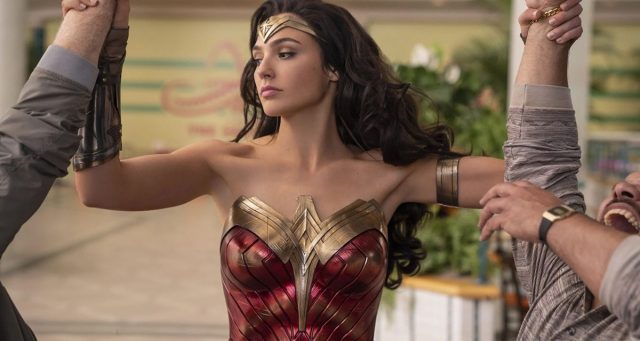
I will also say, as if it wasn’t evident from the original Wonder Woman movie, that Jenkins is clearly very passionate about the character of Wonder Woman. Jenkins understands this character intimately, and clearly has a lot of love for her. This is why a lot of great ideas still manage to shine through this admittedly overstuffed sequel. In fact, Jenkins’ strength also becomes her weakness as writer-director here. She clearly has a lot of ideas for where to take the franchise, but didn’t seem to want to sacrifice any of them. This could explain why Wonder Woman 1984 feels so long and occasionally directionless; It probably wasn’t reined in very much. I’ve seen Wonder Woman 1984 frequently compared to Superman II, but honestly, that represents the opposite problem; A compromised movie that Warner Bros. clearly meddled with, after the original director was fired. Personally, Wonder Woman 1984 reminds me a lot more of Batman Returns; A movie by a director with practically unlimited creative control, who inevitably ran amok during production, and subsequently let their vision become too scattered and unfocused.
Jenkins’ simultaneous efforts to call back to the past while still embracing modern blockbuster appeal don’t totally go off without a hitch either. Wonder Woman 1984’s cheesy tone eventually buckles under the attempts to be earnest and relevant in the modern era, over-complicating a storyline that could have ideally thrived as a slice of colourful escapism. Even then however, there are isolated moments of character-driven brilliance in Wonder Woman 1984, particularly realized through the shocking return of Steve Trevor, and how Diana gets a chance to reconcile her decades-long grief surrounding his death. Likewise, Jenkins still puts together some pretty fun action scenes in this sequel, though they are frustratingly few and far between. Another issue that Wonder Woman 1984 has in common with early DC sequels like Superman II and Batman Returns; It features oddly little of its titular heroine during the middle stretch especially.
I can’t go into too much detail without risking significant spoilers, but I did find that the themes behind Wonder Woman 1984, while executed a little clumsily, also add up to a pretty inspiring, feel-good message that rings true in our current era. You have to slog through quite a bit of meandering filler and overstuffed lore to get there, but the journey is worth it. Fans of Wonder Woman and her longstanding eighty-year legacy are also bound to love the many winks and nods that Jenkins has layered throughout Wonder Woman 1984, particularly a mid-credits scene that’s bound to make longtime fans pretty excited for what’s to come in the recently-announced third Wonder Woman movie.
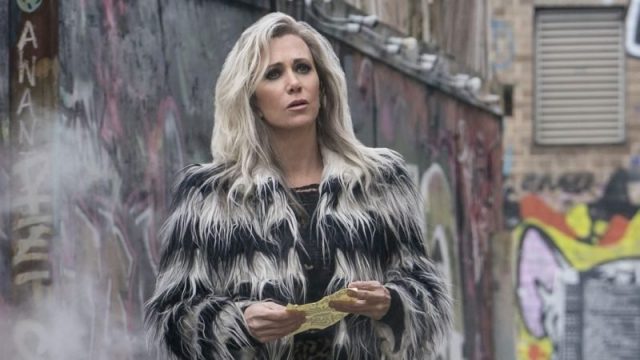
I just wish that Jenkins had exercised a little more restraint with her kitchen sink approach to a Wonder Woman follow-up. There just isn’t enough focus or cohesion to the events of this movie, which range from engaging to mind-boggling, seemingly at a moment’s notice. Jenkins’ direction can be all over the map, but when she’s on point, she’s outstanding. I just wish she was on point a little more often than she is, and not constantly getting distracted on plot details that don’t ultimately carry any real significance in the end. There’s still ultimately more good than bad in Wonder Woman 1984, if you’re willing to appreciate its nostalgic vision, but Jenkins still could have cut around a half-hour’s worth of material, and probably delivered a more consistent, cohesive movie.
Hans Zimmer replaces the original Wonder Woman’s Rupert Gregson-Williams as the composer for Wonder Woman 1984, continuing to reflect a significant shift in overall tone for this follow-up. Zimmer is no stranger to DC movie scores as well, after composing Christopher Nolan’s Dark Knight trilogy, and early DCEU vehicles, Man of Steel and Batman v Superman: Dawn of Justice. Even then though, Wonder Woman 1984 forces Zimmer to abandon his darker, heavier scoring style from those movies, and instead focus more on the upbeat, carefree attitude that seemed to define a lot of Wonder Woman 1984’s period setting. The result is something a lot closer to Zimmer’s work on various animated family movies, rather than his previous DC discography.
Zimmer still packs in a few harder-hitting compositions, especially during the spectacular opening section at the Amazon Olympics, but most of his Wonder Woman 1984 score feels like it’s deliberately moving away from the former edge that DC’s movies tried to carry with them for years. Even Wonder Woman’s own electric guitar-fueled theme, a punchy, triumphant superhero anthem that’s become just as iconic as John Williams’ Superman theme or Danny Elfman’s Batman theme at this point, opts for a softer touch this time out, substituting the electric guitars for more heroic-sounding brass instrumentation, albeit still with that awesome drum-backing track.
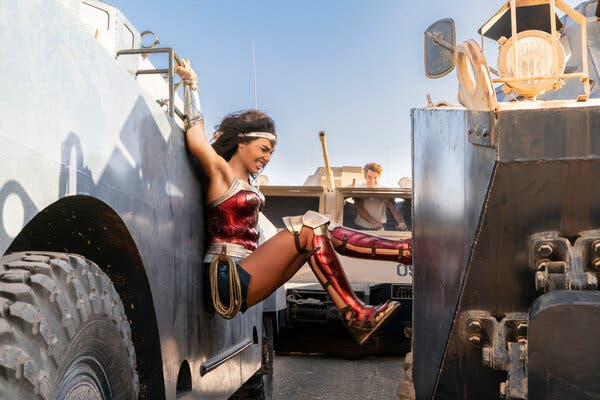
The fluffier soundtrack in Wonder Woman 1984 certainly won’t be to everyone’s tastes. Fortunately, the power behind Diana herself still manages to deliver, even without the mighty punch of a theatre’s sound system. Wonder Woman 1984’s action scenes may have a bit of a retro chic quality about them, being put together in a way that intentionally calls back to the Christopher Reeve-era Superman movies in particular, but they still manage to deliver some solid destruction in the appropriate scenes. Diana still feels like a mighty superhero, even if the violence nonetheless feels nerfed here, in contrast to the original Wonder Woman. Again, that won’t be to everyone’s tastes, but the poppy escapism doesn’t completely betray the expected audio polish of a god-like DC superheroine, who still clearly operates within a world of impressive magic and larger-than-life threats.
Wonder Woman 1984, as with any DCEU production, looks fantastic, even when viewed in one’s home. For all its missteps, the DCEU has always excelled on the technical end, and with Wonder Woman 1984 being effectively liberated from the DCEU’s earlier attempts to be dark and edgy, it can better focus on delivering a vibrant, eye-catching palette of colours. This sequel’s 1984 setting naturally goes for broke here too, considering that this was an era often defined by its garish, bright-coloured fashion sense. The exception of course is Diana herself, who dresses in more neutral colours outside of her extra bright Wonder Woman gear in this sequel, perhaps an intentional reflection of the fact that she doesn’t wish to be a part of mainstream society, following Steve Trevor’s tragic death so many decades ago.
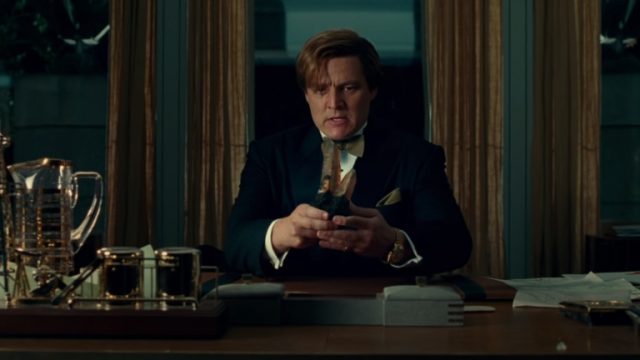
Without the scope of a world war behind it, Wonder Woman 1984’s visuals seem to focus more on cartoon-ish fun than they do expected blockbuster spectacle, which is both pleasant, and a little disappointing. The ‘Snyder-Vision’ from the first movie has at least been stripped out in this sequel, which no longer contains awkward freeze frames and slowed footage, but it’s also true that Wonder Woman 1984 further loses something by many of us being forced to watch it at home, due to the ongoing COVID-19 pandemic shuttering most theatres worldwide at the time of writing. This isn’t really a fault of the movie itself, but it’s worth noting that we sadly won’t be able to enjoy the handful of scenes filmed with IMAX cameras to their full potential in this case, which now merely result in several conspicuous changes in aspect ratio between certain scenes, causing annoyance rather than immersion.
Even with the limitations of likely having to watch Wonder Woman 1984 at home however, there are still a few annoyances among the special effects that not even a theatre would have completely smoothed out. The simplistic Dreamstone effects are almost laughably weak, and worse still is the baffling decision to have the climactic fight scene between Wonder Woman and Cheetah take place in the dark of night, where you can’t fully appreciate most of the effects behind Cheetah. Sure, the climactic fight with Ares in the original Wonder Woman also took place at night, but it was so packed with flashy CGI that it didn’t really reduce the sense of spectacle. Cheetah, however, is a very physical character, with most of her effects being motion-capture and wardrobe for Kristen Wiig. Wiig’s Cheetah design looks surprisingly solid too, even if it’s still themed around the more light-hearted tone throughout most of Wonder Woman 1984.
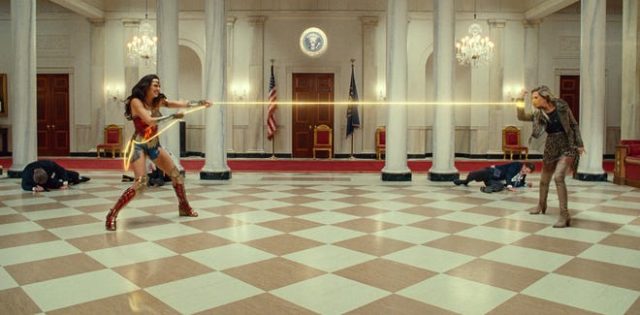
Sadly, by then, Wonder Woman 1984 is running on fumes, having already spent its best action scenes on Max Lord’s goon squad. There are still some really cool action beats in Wonder Woman 1984, but chances are, you’ve already seen most of them in the trailers. The rest of the special effects beyond the action are carried by an intentionally retro-looking visual suite, which creates a pleasant sense of superhero movie nostalgia, even if it nonetheless feels like a bit of a downgrade from some of the more spectacular action sequences that defined the original Wonder Woman.
I suppose it wouldn’t be inaccurate to say that Wonder Woman 1984 feels like a modern cinematic take on the Silver Age of comic books, which saw the initial debut of the shared DC Comics Universe during the 1950’s. The violence was cartoon-ish and in good fun, imperiled citizens found themselves bailed out of some truly absurd situations, and no one truly cared about justifying random macguffins nor sudden, magic-fueled plot twists. Wonder Woman 1984 proudly embraces these nostalgic, backwards tropes, defying the expectations of modern moviegoers with a sequel that’s all about the charm of days gone by. It’s a loud and proud romp, and it doesn’t apologize for its love of more innocent days for DC.
However, a big, full heart can only carry a blockbuster movie so far. Despite writer-director, Patty Jenkins’ clear love and passion for Wonder Woman’s character, there are many instances where she clearly gets carried away with her ideas. This leads to Wonder Woman 1984 often being weighed down by its unpredictable pacing and meandering narrative direction. Jenkins’ highly increased creative control sadly ends up being a double-edged sword here, leading to a bloated, overstuffed sequel that contains too many dry spots, and could have used a smidge more of its impressive, vaguely comical action scenes.
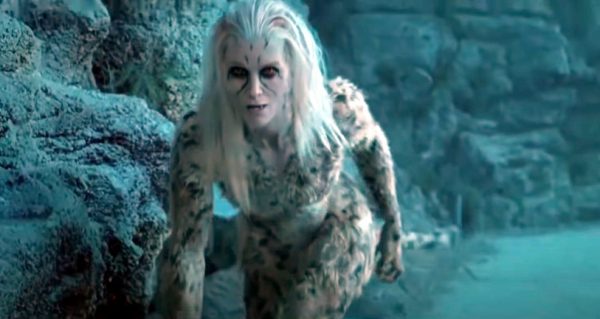
Even if it definitely could have used more edits however, I nonetheless enjoyed Wonder Woman 1984, though that’s probably because I was in on its winking sense of humour and heartfelt focus on superhero nostalgia. Many audiences are bound to be divided on this movie, especially when we’re forced to watch it at home, and can’t enjoy the full appeal of its impressive audio/visual suite without the privilege of being able to go to a theatre, and preferably an IMAX theatre at that.
If you can appreciate the rosy, nostalgia-fueled vision of Wonder Woman 1984, and can put up with some of its slower spots, you’ll probably have fun with it. It definitely succeeds as vibrant, charming escapism. If you’re hoping for another experience on the level of the first Wonder Woman movie however, this isn’t quite it. I don’t really get the sense that Diana herself has lost a step, and I’m still eager to see where her adventures take her during this franchise’s upcoming third movie, but for all of Max Lord’s talk of needing to demand more, I think I would have preferred less movie and more refinement.

